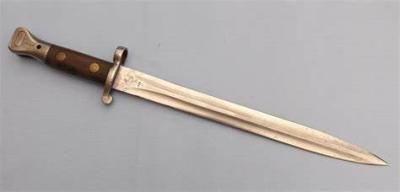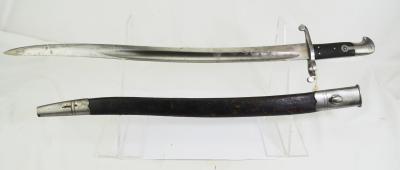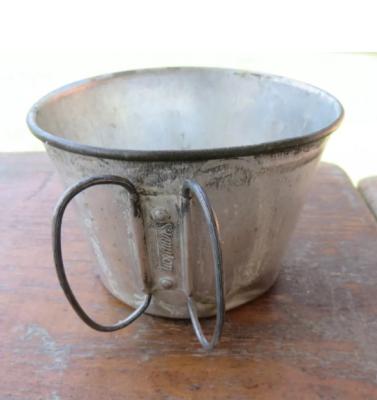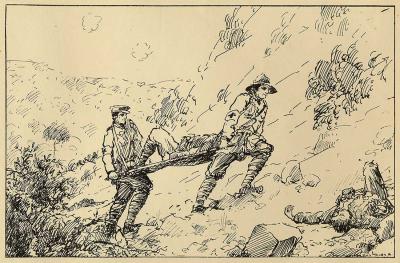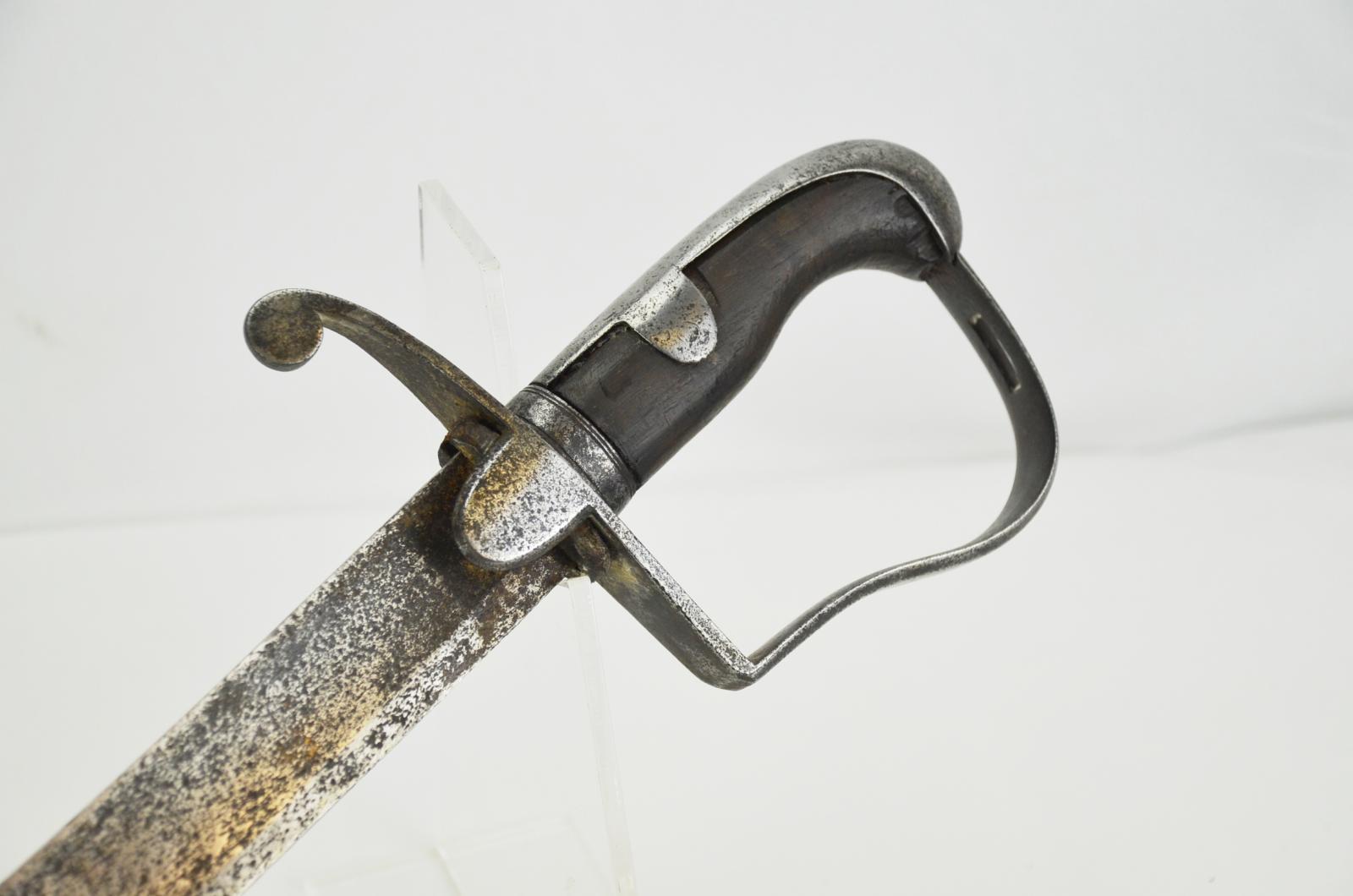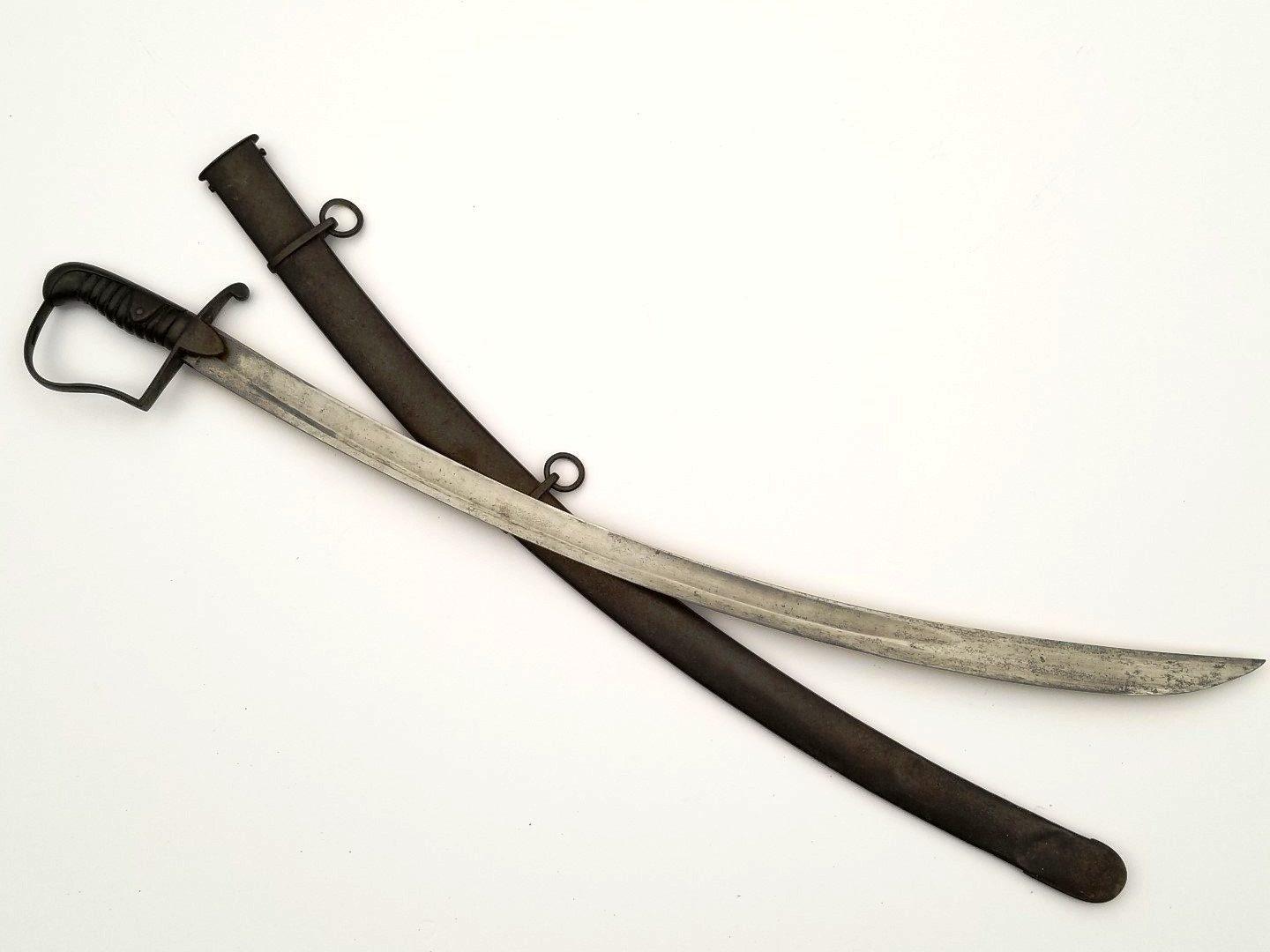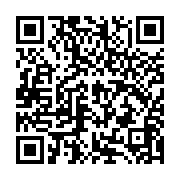1796 Pattern Light Cavalry Sabre
The blade of the light cavalry sabre was 83 to 84 cm long and had a single broad fuller on each side. The sabre was lighter and easier to use than its heavy cavalry counterpart.. The hilt was of the simple 'stirrup' form with a single iron knucklebow and quillon, so as to be free of unnecessary weight. A typical trooper's sabre would weigh nearly 0.96 kg. The iron backpiece of the leather-covered wooden grip had ears which were riveted through the tang of the blade to give the hilt and blade a very secure connection. It was carried in an iron scabbard, with wooden liners, and hung from the waist via sword-belt slings attached to two loose suspension rings.
The Pattern 1796 light cavalry sabre is a sword that was used primarily by British light dragoons and hussars, and King's German Legion light cavalry during the Napoleonic Wars.To overcomethe lack of professional skill displayed by the horsemen and the clumsy design of the heavy, over-long swords in use at the start of the French Revolutionary Wars(the 1788 Patterns) Captain John Gaspard Le Marchyant designed, in collaboration with the Birmingham sword cutler Henry Osborn, a new sabre. This was adopted by the British Army as the Pattern 1796 Light Cavalry Sabre.
The 1796 sabre had a pronounced curve, making the kind of slashing attacks used in cavalry actions decidedly easier.. Its blade, unlike other European sabres of the period, widened near the point. This affected balance, but made slashes far more brutal. The mounted swordsmanship training of the British emphasised the cut, at the face for maiming or killing, or at the arms to disable. This left masses of mutilated or disabled troops; the French, in contrast, favoured the thrust, which gave cleaner kills. A cut with the 1796 LC sabre was, however, perfectly capable of killing outright
Details
Details
Officers carried fighting swords very similar in form to those of the trooper version, though they tended to be lighter, at around 0.83 kg in weight and show evidence of higher levels of finish and workmanship. The blade is remembered today as one of the best of its time and has been described as the finest cutting sword ever manufactured in quantity.
This sword is displayed in the Pre 1914 Galley as part of the stories of British military detachments in Western Australia from 1826 to 1870. All edged weapons, including bayonets, knives and swords in the collection of the Australian Army Museum of Western Australia are physically secured within locked display cases.
Australian Army Museum of Western Australia
Australian Army Museum of Western Australia
Other items from Australian Army Museum of Western Australia
- Bayonet - 1888 Pattern Magazine Lee-Enfield
- British 1860 Pattern Martini Henry Yatagan Sword Bayonet
- World War 1, Tin Cup with Folding Handles
- World War 2, Australian Army Issue Enamel Drinking Cup
- World War 1 - Australian Army Issue Water Canteen
- World War 1, South-West Asia, Türkiye, Gallipoli, SILAS, "Crusading at Anzac"
- Pillbox Hat - Artillery Officer
- World War 1 - 1908 Pattern Webbing
- World War 2 - 1937 Pattern Webbing
- Pre 1914, 2nd Anglo-Boer War, 6th Western Australian Contingent, Perth, 1901
- Pre 1914, Western Australia, Rottnest Island, Undersea Cable, 1900
- World War 2, Western Australia, Rottnest Island, Coast Artillery Instrumentation, Fortress Plotter No 1 Mk 1
